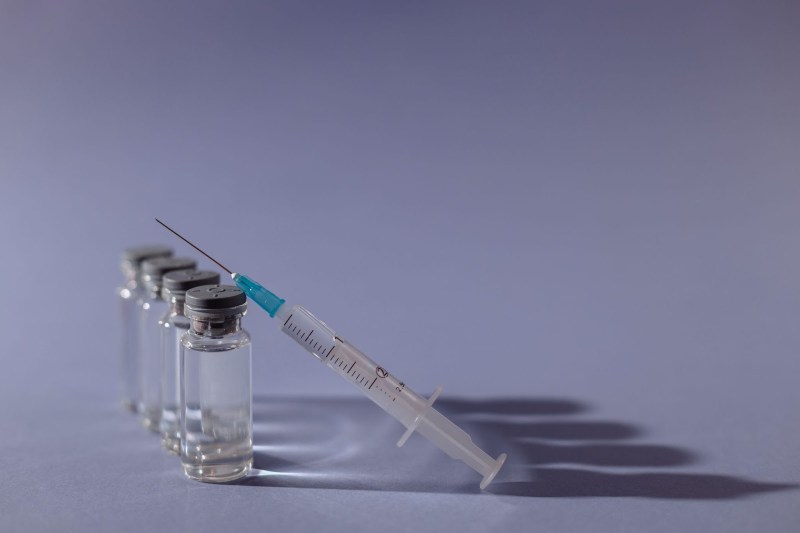Following the 10-day distribution pause of the Johnson & Johnson COVID-19 vaccine, Stanford researchers emphasized the rarity of the side effects –– which affected approximately one in a million –– and had mixed thoughts on the pause, though all agreed that it should not deter people from getting vaccinated.
“Your chances of having a very serious or fatal outcome if you get COVID-19 is far greater than one in a million; it’s more like 1% –– one in 100,” said medicine professor Dean Winslow.
Federal health agencies recommended a temporary pause on the Johnson & Johnson vaccine on Apr. 13 to investigate a blood-clotting condition –– cerebral venous thrombosis –– found in six out of the seven million U.S. Johnson & Johnson vaccine recipients. The pause was lifted on Friday, and the Johnson & Johnson vaccine will now include a new warning label about the blood clots.
“I have seen so many people in the hospital with COVID over the last year, but will almost certainly never see any severe reactions to the J+J vaccine,” infectious disease assistant professor Philip Grant wrote. “Given how rare the cerebral venous thrombosis is, I would think the FDA and CDC could have done their investigations without a pause.”
Grant led a Johnson & Johnson clinical trial at Stanford last November, and he said the blood clotting side effects did not surface during Phase 3 trials. He added that the purpose of post-marketing surveillance is to detect rare side effects that are not seen in the smaller-scale Phase 3 trials.
Winslow said that the pause was necessary from a regulatory and ethical standpoint, and it also demonstrated that the U.S. monitoring system worked as intended by catching and reporting adverse reactions immediately.
“Pausing vaccine administration to review the data is a reasonably prudent step to take to ensure that we as a medical community are making the very best recommendations for patients based on the available data,” primary care and population health instructor Stacie Vilendrer wrote.
Despite the setback, researchers are not too concerned about vaccine supply issues. Pathology and hematology professor James Zehnder said that because the U.S. already has two mRNA vaccines, Pfizer and Moderna, pausing the Johnson & Johnson vaccine briefly will not significantly impact the overall ability to vaccinate people in America.
Because the Johnson & Johnson vaccine is the only approved single-dose vaccine in the U.S., however, it may impact rural areas where storage is more of an issue, Grant wrote.
Beyond vaccine supply, researchers are more concerned that the pause will fuel vaccine hesitancy. Grant wrote that it may impact confidence in not only the Johnson & Johnson vaccine, but in all vaccines.
“Hopefully, the pause did not permanently tarnish the public’s impression of the safety of the vaccine, as the vaccine can play a large role in reaching hard to reach populations in the U.S. and in the global vaccination effort,” Grant wrote.
The reasons for the vaccine’s side effects are not completely clear yet, but Zehnder noted that the blood clotting from the Johnson & Johnson vaccine mimics an already well-understood disease –– heparin-induced thrombocytopenia (HIT) –– with the “possible exception of where the clots are occurring and that there are more women than men affected.” HIT is a rare condition caused by an autoimmune reaction to the medication heparin, which increases the risk of blood clotting.
Hematology professor Lawrence Leung said that the blood clots’ relationship to HIT still needs to be clarified: they are similar to those seen with the AstraZeneca vaccine but mechanistically distinct from the clots in COVID-19 patients and from oral contraceptives.
As many social media users have increasingly compared the Johnson & Johnson blood clots to those from birth control pills, which have about a one in 1,000 chance of occurring, experts have emphasized that they are incomparable because they are two separate types of clots arising from different causes and requiring different treatments.
FDA officials have also stated that there is no clear association between the Johnson and Johnson blood clots and birth control pill use.
“We are unable to say at this point whether there were additional factors such as a medication or concurrent illness that could have contributed to these adverse events,” Vilendrer wrote.
“It’s clearly safer to get the vaccine and not get COVID than to not get the vaccine because of a very rare complication,” Zehnder said. “The challenge will be if you can identify groups of people that should get the mRNA vaccine instead of this vaccine. … I think that’s a big challenge right there.”
